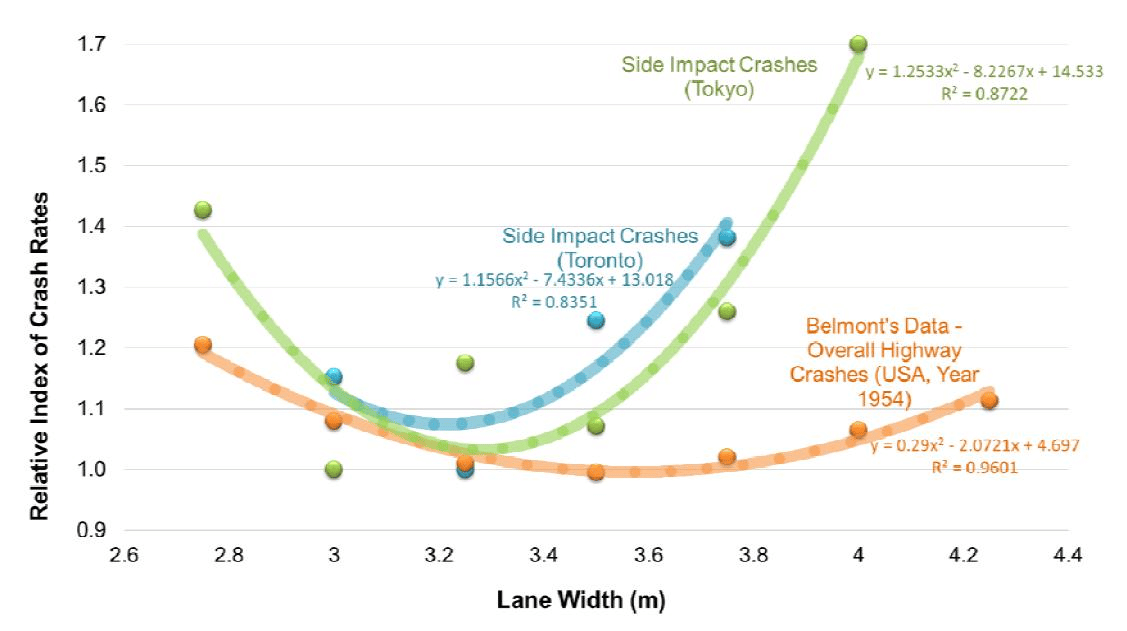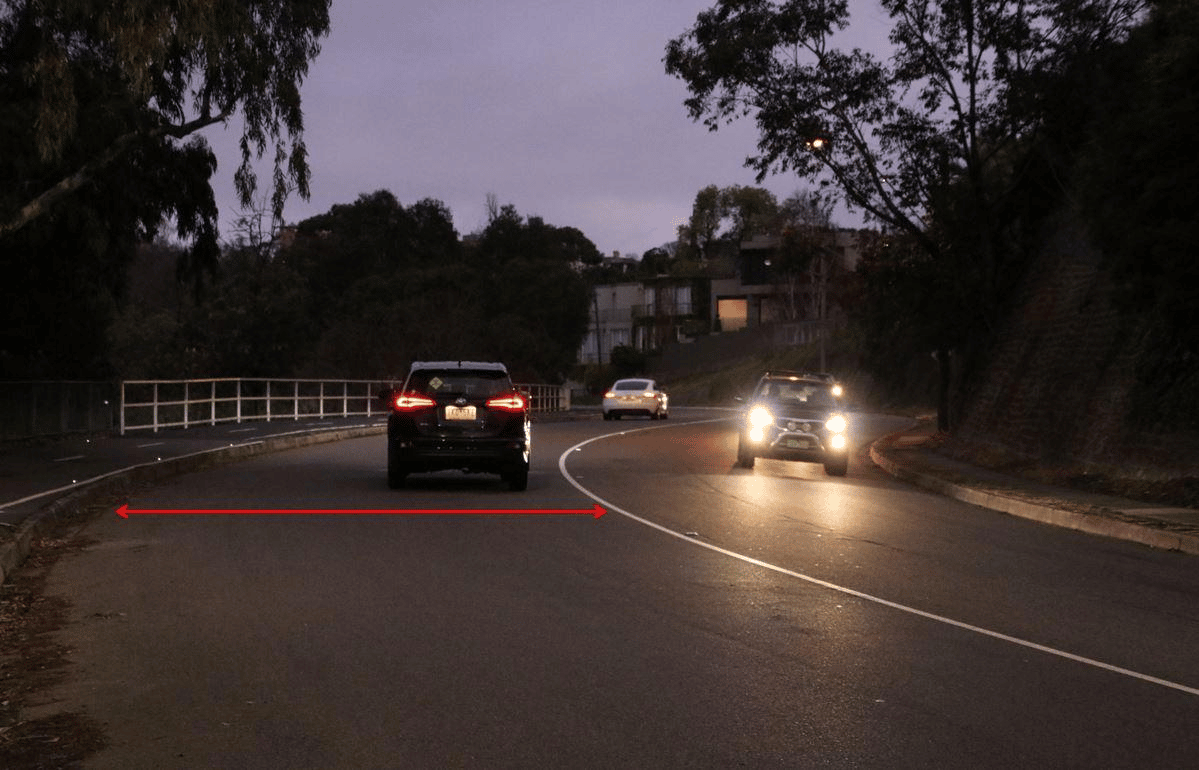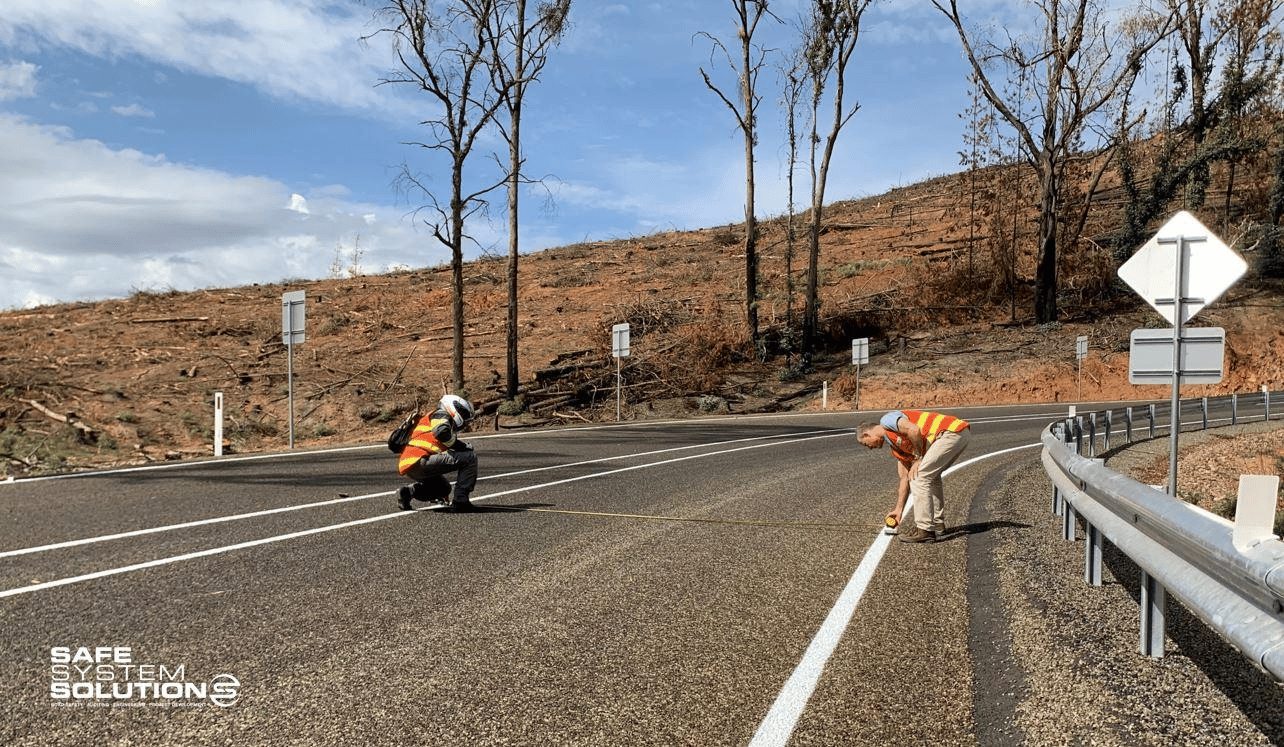Lane width and road safety.
Traditional traffic engineering theory is that wider lanes are safer because they allow a margin of error. This may be the case on freeways, but is it true in other road environments?
Karim, D.M. carried out a research study in 2015 that examined crash rates and lane widths on urban streets in Tokyo and Toronto. He concluded that there is a ‘sweet spot’ for safety: lanes between 2.8m and about 3.2m are the safest. Lanes narrower than 2.8m see an increase in sideswipe collisions, while lanes wider than 3.3m encourage speeding and more aggressive driving.
But don’t forget to factor for specific vehicle use, curves, carriageways/lanes, kerb type and other site specific factors (Austroads Guide to Road Design Part 3 is a great starting point).
What’s your experience with lane widths and road safety in different road environments?
Traditional traffic engineering theory is that wider lanes are safer because they allow a margin of error. This may be the case on freeways, but is it true in other road environments?
Karim, D.M. carried out a research study in 2015 that examined crash rates and lane widths on urban streets in Tokyo and Toronto. He concluded that there is a ‘sweet spot’ for safety: lanes between 2.8m and about 3.2m are the safest. Lanes narrower than 2.8m see an increase in sideswipe collisions, while lanes wider than 3.3m encourage speeding and more aggressive driving.
But don’t forget to factor for specific vehicle use, curves, carriageways/lanes, kerb type and other site specific factors (Austroads Guide to Road Design Part 3 is a great starting point).
What’s your experience with lane widths and road safety in different road environments?



